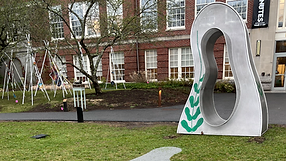
Resources

New to Systems Thinking? Start Here.
Download this free guide for a teacher-friendly introduction.
Areas of Focus
Children as Systems Thinkers
Are children "natural" systems thinkers? Age-appropriate learning and teaching across the age bands.
Systems + Decision-Making
How people make decisions in dynamic, feedback-rich environments.
Barriers to Systems Thinking
The causes and consequences of asystemic thinking—mental models, silos, incentive misalignment, etc.
Videos & Animations
Research: Systems Thinking + Children
As a researcher at Harvard, I studied how 10-year-olds and their teachers make sense of complex systems—from ecosystems to everyday cause-and-effect. What I found was striking: even bright, motivated students (and adults!) often think in straight lines when life is full of loops. My research, and later school visits with preschoolers -- suggests that children are naturally wired to notice relationships and patterns, long before we give them words for it. When we nurture that early awareness, we’re helping them build habits of mind that support creativity, empathy, and problem-solving for life.
Download the full brief:
“Children as Systems Thinkers: A Research Overview” (PDF) COMING SOON
A look at key studies, developmental insights, and Linda Booth Sweeney’s original research on how children and adults understand complex systems.
Journal and Magazine Articles
How Children’s Stories Can Save the World (or at least understand it!)
Medium article, March 16 2018
Booth Sweeney, Linda (2017). All Systems Go!: Education for the Anthropocene.
In State of the World 2017 Report. Washington, D.C.: Worldwatch Institute.
Booth Sweeney, Linda (2012). Learning to Connect the Dots: Developing Children’s Systems Literacy. The Solutions Journal, Volume 5, Issue 3, October 2012.
Booth Sweeney, Linda (2011). Bringing Back the Wolves: Yellowstone National Park is Thriving, Thanks to a Long-Feared Carnivore.
Highlights Magazine for Children, Vol. 66, p. 30, June 2011.
Booth Sweeney, Linda and John Sterman (2009). The Carbon Bathtub: A Big Idea.
Featured in National Geographic Magazine, December 2009.
A visual and conceptual model developed by Dr. John Sterman (MIT) and Dr. Linda Booth Sweeney to illustrate the accumulation of carbon dioxide in Earth’s atmosphere using the analogy of a bathtub.
Booth Sweeney, Linda (2004), Thinking About Systems: Student and Teacher Conceptions of Natural and Social Systems (Doctoral dissertation, Harvard Graduate School of Education). Revised as an article with Professor John Sterman, MIT. System Dynamics Review, 23(2–3): 285–311, March 2007.
Booth Sweeney, Linda (2005). How Is This Similar to That? The Skill of Recognizing Parallel Dynamic Structures on Center Stage.
Creative Learning Exchange Newsletter, Fall 2005, Vol. 14, No. 3.
(Reprinted in The Systems Thinker, Pegasus Communications, October 2005, Vol. 16, No. 8.)






















